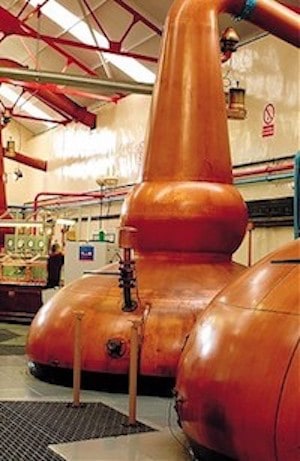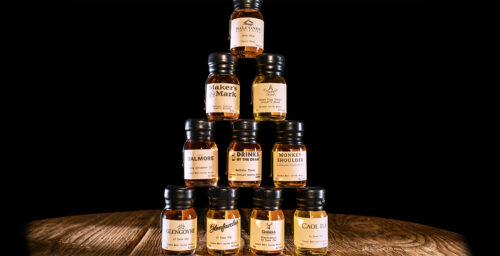
For many centuries, all stills were direct-fired stills. Building a fire directly beneath the pot of a still was an effective way to boil the mash, but it also made burning and scorching a much larger concern, and created a potential ignition source for alcohol vapors that could lead to dangerous explosions.
Today, most stills are heated by steam or electricity. It’s easier on the production floor, often cheaper, and safer. But a few distillers are sticking with direct-fired stills, and it’s not just out of a sense of tradition; they maintain that it just makes better-tasting whisky. Some of those old-fashioned distillers include:
Direct fire distilling necessitates a slightly different approach. Stills must be fitted with a device called a “rummager,” which is essentially an agitator that keeps the mash moving inside the pot. Without it, heat would be distributed too unevenly, and the mash could scorch. The fire also requires careful tending, making sure it’s not burning too hot or too cold.
Why take the trouble? Flavor. At a recent event I attended, Glenfarclas attributed their direct-fire process with creating some of the unique flavors found in their whisky. And it makes sense: steam-jacketed stills typically top out somewhere around 240 or 250 degrees Fahrenheit, while direct-fired still can reach temperatures of 800 to 1500 degrees Fahrenheit. It would certainly be surprising if that dramatic temperature difference didn’t make an impact on the finished product.
Some connoisseurs have a strong preference for the flavor of Scotch made on direct-fired stills, arguing that it produces a more robust, full-flavored spirit, with more variation between batches. In a thread on WhiskyMag.com, it also seems that the stillmen themselves strongly preferred the direct-fire stuff.
So why make the switch to steam-fire? It’s easier on the stills, since steam provides a much gentler heat. It also gives distillers greater control over the internal temperature of the mash. Last, and not least, a direct fire source within the distillery environment creates a much larger fire risk than steam heat. That’s enough reason for most Scottish distillers to make the switch – but, in a historic industry like this one, not everybody is convinced that mod-cons are worth the price.



